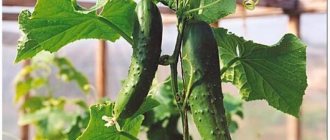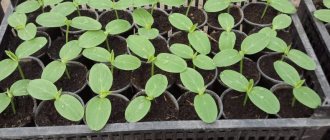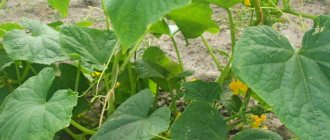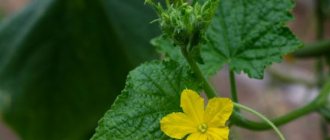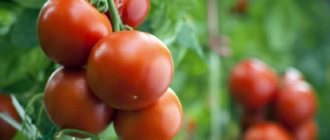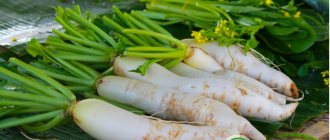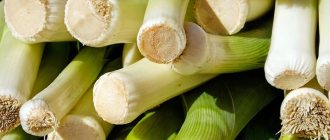Growing cucumbers in a polycarbonate greenhouse: when and how to plant, you will learn from our article.
Cucumber is an almost problem-free vegetable for gardeners to grow. In the south, partly in the central zone of the Russian Federation, it is successfully grown in open ground. However, even in these regions you want to get an early harvest and collect your favorite vegetable for as long as possible. In colder areas, cucumbers can only be successfully grown in protected soil (in greenhouses). Agricultural technology for cucumbers is not very complicated, but there are subtleties and nuances that are useful to know if you want to grow and harvest a large harvest of high-quality fruits.
In order to grow cucumbers without problems and reap a good harvest, you must try to follow the prescribed rules of agricultural technology for this vegetable.
When to plant cucumbers for greenhouse seedlings
Depending on the climatic characteristics of the region, cucumbers are planted as seedlings: in the South - from mid-March, so that by the second half of April they can be planted in a greenhouse; in the middle zone (Moscow region) - no earlier than mid-April, suitable conditions for planting in the ground occur at the end of May; in the North-West (Leningrad region) - seeds are sown in early May in order to plant them in the first half of June; in Siberia and the Urals, there is no need to rush into sowing; the favorable time for planting is in the first ten days of May, since planting also takes place in June, there is a risk of return frosts.
Variety selection
New varieties and hybrids of cucumbers are developed by breeders every year. For greenhouse cultivation, it is better to purchase self-pollinating varieties of cucumbers, since they do not require pollination by insects. The fruit sets in closed ground without outside interference.
Bush cucumbers
Bush cucumbers differ from other varieties in their limited growth. The advantages of the variety are the compact size of the bush, which during growth does not turn into dense thickets. Outwardly it resembles squash bushes. Thanks to this property, bush cucumbers save space in the garden, especially in small areas.
The “Bush” variety does not have side shoots, so it does not require pinching and bush formation. The central stem reaches a height of no more than 70 cm. Short lashes 35-60 cm long extend from it, branching is moderate.
The “Bush” cucumber is planted from May 10 to June 10, both by seedlings and by seeds, in prepared soil. Flowering is observed early, and fruiting is consistent, lasting just over three weeks.
The following varieties of cucumbers are in demand among gardeners:
- "Bush Gift";
- "Mikrosha";
- "Baby F1";
- "Ant F1";
- "Shorty F1."
Self-pollinating cucumbers
Self-pollinating varieties of cucumbers are especially popular now. A more correct definition is “not requiring pollination.” Parthenocarpic hybrids of cucumbers are intended for growing indoors - on a balcony, in a greenhouse, and even on a home windowsill. As the name suggests, they do not require bumblebees and bees for pollination. Cucumbers do not have male flowers, only female ones, which develop into fruits without the participation of insects. Seeds in greenery do not ripen.
The fruits are identical in color and size, have no bitterness and do not turn yellow.
Most self-pollinating varieties are suitable for growing outdoors.
Popular hybrid varieties include:
- Adam F1;
- Cupid F1;
- Garland F1;
- April F1;
- Son-in-law F1;
- Emelya F1;
- Zozulya F1 and a number of others.
Early cucumbers
It is possible to get an early harvest of cucumbers only in closed ground. Polycarbonate greenhouses are well lit, so they are ideal for these purposes. Such structures can be either heated or without additional heating.
The main condition for obtaining a good harvest of cucumbers in the early stages is the correct selection of seed varieties. It is also important to take into account the climatic factor in which you live.
For temperate climates, suitable varieties are self-pollinating hybrids:
- Buyan F1;
- April F1;
- Benefit F1;
- Zozulya F1.
Growing seedlings
To obtain high-quality seedlings with thick stems, it is necessary to carry out a number of measures.
What soil is suitable
To obtain strong and high-quality seedlings, you need to prepare the correct soil necessary for cucumbers. Cucumber seedlings are more tender and vulnerable than, for example, tomato seedlings; it is more susceptible to various rots, quickly stretches out, and quickly gets sick.
Soil is the support for seedlings, so it must be of high quality and reliable, nutritious and disinfected.
Special agricultural stores sell soils of different compositions. Of course, you can choose the right one among them if you are confident in its quality and the integrity of the manufacturer. Those summer gardeners who have been purchasing repeatedly tested soil mixtures for many years know the name and manufacturer.
However, many people prefer to prepare the soil for seedlings themselves. There are many recipes for soil mixtures for cucumbers; you need to prepare it in the fall. The basis for cucumber soil is: humus, peat, sand, sawdust (for 5 liters of soil mixture) - recipes:
First composition:
- Humus or turf soil – 40%;
- Peat - 40%;
- Sawdust (pre-steamed) – 10%;
- Organics (manure) – 10%;
- Superphosphate – 7 g;
- Potassium sulfate – 4 g;
- Urea – 3 g;
- Magnesium sulfate – 1 g.
Second composition:
- Rotted organic matter (manure) – 60%;
- Turf land – 30%;
- River sand – 10%.
- Add fertilizers to this composition as well (as in the 1st composition).
Third line-up:
Peat - two liters; humus - two liters; sawdust - one liter; wood ash - 100 ml; complex fertilizer (for cucumbers) - 1 tbsp. Fourth composition: Turf soil - 2.5 l; compost - 2.5 l; wood ash - 100 ml; superphosphate - 10 g.
Fifth composition:
Peat - 2.% l; sawdust - one liter; river sand - one liter; mullein - half a liter; wood ash -2 tbsp.
Some useful tips for preparing soil mixture:
- It is better to steam sawdust before adding it to the soil;
- to disinfect the soil mixture, pour it well with a dark pink solution of potassium permanganate;
- you can spill the soil with Fitosporin-M to disinfect the soil and prevent infection with fungal viruses;
- soil from the garden (if taken from there) should be collected where previously melon crops (zucchini, cucumbers, melons, etc.) had not been planted for four years!
It is much more useful to prepare the soil mixture in the fall - it will have time to mix, become a homogeneous composition, and “mature.”
Pre-sowing seed preparation
Cucumber seeds are usually on sale in bags, pre-calibrated and prepared for planting. You can recognize them by the shell that covers the seeds. Manufacturers sometimes put a mark on the bag or write that the seeds are ready for planting. These do not require additional preparation measures for sowing.
Clue! In order for cucumbers to form more female flowers and produce a larger harvest, the seeds must be collected 4 years ago. Fresh ones will give more male ones and the harvest will be meager.
If you collected your own seeds or purchased them from a dubious source (unknown manufacturer, neighbor, etc.), in order to successfully obtain healthy seedlings, the seeds should first be prepared for sowing:
- Calibration: manually select undamaged, large and medium-sized seeds of approximately the same size, removing crooked, wrinkled, small, damaged shell, darkened seeds. Place the seeds selected for sowing in salted water (1 teaspoon of salt per glass of water) for 50-60 minutes. Sunken seeds should be washed under running water (through a sieve, for example), and those that float should be thrown away.
- Disinfection: soak the washed seeds in a dark pink solution of potassium permanganate for 30 minutes, then rinse them under running water to disinfect and replenish the seeds with microelements.
- For health: in order to prevent diseases, especially rot, and to increase resistance to diseases, it is useful to soak the seeds in a solution of a fungicide, for example Fitosporin-M, for three hours. Then rinse the seeds in warm water.
- Warming up: the procedure helps to increase the formation of female flowers on plants and prevents infection with viruses. After the previous manipulations, the seeds should be slightly dried and placed in a gauze or paper bag. Place the bag in a warm place (battery, stove, etc.) for several days. Maximum t is not higher than 65°C. Wet method: immerse a gauze bag with seeds in a thermos with water (t – 55-60°C).
- Hardening: seeds hardened by cold are more resistant to adverse weather conditions, low temperatures, drafts and watering with cold water. Place a damp cloth, cloth or paper, on a saucer (small plate). Place cucumber seeds on it, wrap it, slightly moisten it and place it in the refrigerator for a day (at a place where the temperature is about 2°C).
- Growth stimulants: Zircon, Epin or aloe juice have proven themselves to be the most effective. The drugs are diluted as indicated in the instructions supplied with them. The dosage must be strictly followed! Squeeze the aloe leaves through cheesecloth, pouring the juice over the seeds; cover with a napkin and leave overnight.
- Germination: place the seeds on a damp cloth made of thick fabric, cover with the other part of the cloth and lightly moisten. Then put the plate with the seeds in a warm (28-32oC) place for a day or three (until the seeds hatch). You need to regularly check to see if the napkin is dry. It must be kept moderately moist.
Advice! In order not to exceed the dose of potassium permanganate, you should prepare a concentrated solution in a bottle, which can be stored for quite a long time. And instead of pouring crystals into the desired container, you can drip into the water exactly as much as is needed to obtain the desired concentration.
Watch the video! Soaking cucumber seeds
What containers to plant in?
Cucumbers, unlike tomatoes, do not like transplanting. Therefore, if they are grown through seedlings, each plant (or two) should have its own container. The best option is peat cups. However, if you plan to plant a large number of plants, this can be an expensive option.
Attention! Cucumber seeds should be planted for seedlings approximately three weeks before the intended planting in the ground (18-25 days). Here you also need to take into account that germinated seeds germinate very quickly. Overgrown seedlings may not tolerate transplanting into the ground.
You can use plastic cups, cut plastic bottles, you can prepare cups from newsprint, which are then placed in a more stable container. In addition to peat cups, any other container should be thoroughly washed and disinfected (by any method: boiling water, potassium permanganate, hydrogen peroxide, etc.).
Drainage holes should be made at the bottom of the cups to drain excess moisture. A low (about 1 cm) layer of expanded clay, brick chips or other drainage material should be poured onto the bottom, then a layer (1 cm) of river sand, and the prepared soil mixture should be placed on the sand. It should be well moistened.
Attention! The planting containers must be high enough, since cucumbers have a long taproot, and soil will need to be added to the sprouts that appear if the seedlings stretch out.
Tall containers with a volume of 250-300 ml (for example, sour cream cups) are most suitable.
Planting algorithm: instructions for direct sowing of seedlings
- A cucumber seed is placed in a glass with moistened soil, root down, very carefully and carefully so as not to damage the hatching sprout.
- You can use a pencil or a sharp thin stick to make a small depression into which the seed is buried.
- Planting depth – 1.5-2 cm (depending on the size of the seed).
- Then it must be carefully sprinkled with a layer of slightly moistened soil to the desired height.
Watch the video! the easiest and simplest way to sow cucumbers for seedlings
Are the seeds ready?
If your main goal is a good harvest, learn how to properly germinate their seeds and grow the resulting sprouts yourself.
If you bought high-quality seeds, then the seedlings will be of the same height, will open at the same time and the stems will be healthy and strong. But they need to be prepared, and separate time must be allocated for this. Therefore, to the traditional 25-30 days for cultivation, add another 3-4 to work with the seeds themselves.
Here is a recipe for fully preparing seeds:
- Step 1. Warm up the seeds for a month next to the battery. You can right behind it, in a bag.
- Step 2. Select good seeds using salt water (2 tablespoons per 1 liter of water). It will be enough to observe for 5 minutes, then throw away all the floating particles and rinse the rest well.
- Step 3. Disinfect the seeds in a pink solution of potassium permanganate, about 20 minutes. Rinse well again.
- Step 4. Prepare a nutrient solution from wood ash (20 g per 1 liter of water), aloe juice (half and half with water) or a special solution of world elements.
- Step 5. Now harden the seeds. We keep them for 6 hours at a temperature of 18-20°C, 18 hours at a temperature of 0-2°C. If desired, place the wet seeds in a bag and keep them in the refrigerator for two days at a temperature of 0-2°C.
- Step 6. Now we germinate the seeds and plant them in cups.
A good way to germinate cucumbers is:
- Step 1. Take sawdust, scald it with boiling water and a weak solution of potassium permanganate and cool slightly.
- Step 2. Place the sawdust on a plate, place the seeds on top, and cover with another equally thin layer of warm sawdust.
- Step 3. Wrap the entire plate in cellophane and wait for the third day when all the seeds have sprouted.
Interestingly, for many centuries, Russian peasant women sprouted cucumber seeds on their own breasts, hiding them in damp cloth. The sprouts appeared the next day, and the subsequent harvest was quite pleasing. The secret is that the heat of the human body, 36.6°C, is ideal for germinating these seeds.
And finally, you can make good soil from the following mixtures:
- 8 parts peat and 2 sawdust.
- Half humus and garden soil.
- Garden soil, peat compost and sawdust in equal parts.
Seedling care
Containers with sown seeds should be placed in a warm place. To create a favorable climate, it is useful to cover them with plastic film or a bag, or you can cover them with glass. The bag, film or glass should be opened briefly two or three times a day for ventilation. If the soil dries out, it should be slightly moistened.
When sprouts appear, containers with sprouts should be moved to a sufficiently lit place (a south or south-west window, for example). If the sprouts have stretched out a little, use a spoon to carefully sprinkle the soil right up to the leaves, then carefully water them (the water should be warm).
Lighting
The first few days, if the weather is sunny, the sprouts need to be shaded a little to prevent them from burning. Therefore, it is better to move containers with seedlings to the window in cloudy weather so that they gradually get used to daylight.
If plants do not have enough natural light, you can supplement them with phytolamps (they are analogues of sunlight). In extreme cases, you can use fluorescent lamps.
Watering, fertilizer
Moderate watering is good. The main thing: do not dry out, but also do not over-moisten the soil. With each watering of the soil, it is useful to add a few grains of complex fertilizer (mineral - add to the water for irrigation). But you don’t know how much fertilizer you applied.
It is much better to carry out root feeding according to the scheme, which is described in more detail in the article How to feed cucumber seedlings on the windowsill at home before planting in the ground, so that they are plump
If the lower leaves or cotyledons suddenly begin to turn yellow, this is a signal of nitrogen starvation - it is useful to water the sprouts with a weak solution of urea in the following concentration:
- water – 10 l;
- urea – 1 tablespoon;
- superphosphate – 1 heaped tablespoon.
If the seedlings become crowded in the cups, and it is too early to plant them in the ground, they should be very carefully transferred to larger containers (so careful that they do not realize that they have been moved).
Hardening of seedlings before planting in a permanent place
By the time the cucumbers are transplanted into the greenhouse, the temperature in it should be about 20°C, and the soil temperature should be about 15°C. If the room is heated, you can adjust the transplant time yourself. A week before transplanting the seedlings, on warm days they should begin to be brought into the greenhouse, first for a short time (for 2-3 hours), then gradually increasing the time the seedlings stay indoors.
It is more favorable for cucumbers if at first this process occurs on cloudy days. If the weather is sunny, the sprouts need to be shaded for the first time (using any available means: covering material, paper, newspapers, etc.)
When adaptation is successful, the seedlings can be planted in a greenhouse.
Soil preparation
The first stage when planting cucumbers is preparing the soil. Vegetables love soft, loose soil, which must also be fertile.
When growing cucumber seedlings, you can purchase a ready-made substrate in the store. The soil should not only be loose and fertile, but also retain moisture, since cucumbers love to “drink.”
There should be a minimum of peat, since soil with a high content of peat dries out very quickly in greenhouse conditions.
The optimal composition of the soil substrate for cucumber seedlings is as follows:
- 3 parts of turf land;
- 2 parts humus;
- 1 part sand.
This mixture should not contain lumps. Before planting, it is recommended to bake it in the oven for 10-20 minutes or freeze it (prepare it in the fall and take it out to the balcony for the winter). Such procedures help destroy pathogenic microbes. Before sowing seeds, it is recommended to add 1 liter of vermiculite (for loosening), a glass of ash, and two tablespoons of superphosphate to 10 liters of mixture.
When to plant cucumber seedlings in open ground or greenhouse
It will be possible to plant cucumbers in the greenhouse when the air temperature warms up to +15. In the south, it is recommended to plant seedlings from the second ten days of April. In the middle zone (Moscow region) - from the second ten days of May. In Siberia, the Urals and the North-Western regions - from late May - early June.
Strong cucumber seedlings should look like this:
- height - 20-25 cm;
- stem thickness - 7-8 mm;
- 5-6 true leaves.
Planting cucumber seedlings in a polycarbonate greenhouse
Step-by-step instructions for planting seedlings in the ground:
- Planting holes: ideally, if the soil in the greenhouse is similar to the soil for seedlings. If this is not the case, pour the soil mixture prepared for the cups into the planting holes (at a depth of a spade bayonet). You should also add either fertilizer (complex) or superphosphate (1 teaspoon per hole) to the holes. Everything must be mixed and poured with a weak solution of potassium permanganate or warm water.
- The distance between plants (depending on the characteristics of the planted variety) is on average about 30-50 cm, in row spacing about 60-70 cm.
- One and a half to two hours before planting, the seedlings should be watered very generously (this will make it easier to remove the earthen clod without damaging the roots). Under no circumstances should you pull the plant by the stem - it may break.
- Planting: each sprout with a lump of earth is transferred into the prepared hole. If it has stretched out a little, it should be buried down to the first lower leaves. The soil must be carefully and carefully added, compacted and watered a little (the water should be warm).
- It is best to plant seedlings in cloudy weather - this will help the plants adapt faster to a new location.
If the weather is clear, the planted seedlings should be shaded.
How to plant sprouted cucumber seeds
One sprouted seed is sown in each pot to a depth of 1 cm. If you have a small number of seedlings, you can wrap the surface of each pot with film (I use cling film). Well, if the number of seedlings is large, then all the pots are covered with film on top. As soon as shoots begin to appear, the film is removed and the plants are provided with good lighting conditions.
The temperature for the first 3-5 days is maintained at 14-16°C, and then in sunny weather - 20-22°C, and in cloudy weather -17-19°C.
On sunny days, water moderately with warm (this is a must!) water. Feed with mullein solution (1:10) or mineral fertilizers (superphosphate 20-30 g, potassium chloride 10-15 g per 10 liters of water).
Greenhouse care
The peculiarities of growing crops in a greenhouse are the need to regularly monitor the temperature and light conditions, maintain the required level of humidity and regularly ventilate the room in favorable, warm, quiet weather.
Lighting
In order for cucumbers to grow well and bear fruit abundantly, the lighting must be very good. The optimal location of both the greenhouse itself and the rows with plants in it is from north to south: in this case, the crops receive sunlight for a long time and confidently.
Temperature
Cucumbers are a very heat-loving crop, very sensitive to temperature changes, both downward and upward. If the greenhouse is too hot, cucumbers begin to shed ovaries, flowers and greens. If the temperature drops (even slightly), they simply stop growing and are more quickly affected by rot.
Favorable temperature conditions during all periods of the growing season in the photo:
The temperature can be adjusted by opening the vents or windows in the upper part of the rooms. It is better to open doors only in hot, windless weather and only from the south side, because this culture does not tolerate drafts at all.
Humidity
The humidity level in the room where cucumbers are grown should be kept at 70-85%.
On very hot days, it is useful to place containers of water in the greenhouse. For example, a barrel is the best option for humidity levels: you can add organic matter and grass to the water in the barrel, which, when fermented, will begin to release carbon dioxide, which cucumbers really need for the process of photosynthesis. And the solution obtained after fermentation is an excellent fertilizer. So such a container with water is actually “three in one”. In addition, a barrel that heats up during the day will give off heat to the plants at night.
Watering
The soil should be moderately moist. Cucumbers are harmed by both excessive moisture and lack of moisture. When watering, you should try not to get water on the plants; you should water at the root. An excellent way is drip irrigation, for example.
If watering is done using a watering can, it should have a diffuser to prevent exposure of the roots and erosion of the soil.
Water for irrigation should be warm (25-28oC). Watering with cold water provokes the formation of bitterness in fruits and the development of bacterial rot.
Watering cucumbers is most beneficial either in the early morning or after sunset. If the weather is hot, you can water every day, if it’s cloudy, once every two or three days.
Top dressing
Cucumbers, however, like any other crop, are very responsive to feeding:
- Organics : mullein infusion (1:10) is perfect for cucumbers; bird droppings (1:25); nettle (1:5); tops and stepsons of tomatoes (1:10). Organic matter is placed in a barrel of water, and ash must be added there (wood ash: 2 cups per 50 liters). All that remains is to wait until fermentation ends and the infusion will lighten. Watering should be done at the root level in well-moistened soil.
- Microelements : such fertilizing should be carried out regularly, not by watering, but by spraying all parts of the plant with a solution. In the photo you can see: how to understand what cucumbers are missing:
- Spraying and fertilizing should be alternated: once every 5-7 days. Preventive measures and feeding are reflected in the diagram:
What and when to apply preventive measures to prevent diseases, when to add the necessary nutrition, can be seen in the diagram.
Weeding, loosening, mulching
Obviously, weeds should not grow in garden beds: they clog the soil, take away nutrients from crops, and contribute to the spread of diseases and pests. It is easier to weed areas 3-4 hours after watering: soft, pliable soil - from such weeds can be easily removed along with the roots.
It is convenient to combine weeding with loosening. However, it should be borne in mind that its depth is no more than 5 cm. If you loosen to a greater depth, you can damage the roots of the cucumbers.
To reduce the amount of worry about watering, it is useful to mulch the soil between plants. Mulch prevents intense evaporation of moisture, rapid drying out of the soil, and also prevents weeds from growing. Most suitable as mulch for cucumbers:
- peat;
- wood shavings;
- rotted sawdust;
- straw.
But you should not cover the ground with film - slugs willingly settle under it, which are very harmful to cucumbers.
Bushes: formation, tying
Cucumbers need a certain area for full development; they do not tolerate thickening. It is important for normal growth and development, for fruiting, the correct formation of plants, pinching and removing excess shoots (depending on the characteristics of the planted variety). Shoots, especially lateral ones, should be pinched before they reach 20 cm! It is better to pinch the top by cutting it off with scissors - this method causes less injury to the plant. Stepchildren from the sinuses and mustaches also need to be removed using the same method.
Reference! Blinding: removal of all leaves, ovaries, flowers, side shoots up to the true fourth leaf (this does not include cotyledon leaves). Any pruning (not tearing off!) of vines and shoots on cucumbers should be done early in the morning and only with sharp, disinfected tools - this way the wounds will heal faster until the night.
Bee-pollinated and branching varieties
Such cucumbers, especially mid-season and late ones, produce the greatest number of ovaries on the side vines. Such plants are formed as follows:
- Zone 0 (up to 20 cm in height from the root): cut off the lower shoots (3-4 lashes) at the very stem;
- 1st zone (from 20 to 80-90 cm): the next 3-4 lashes - leave one ovary on each;
- 2nd zone (80 cm-130 cm): in the upper part - 3-4 on each shoot (3 leaves and 3-4 cucumbers).
The main stem is thrown over the trellis, then pinched after a short time.
Attention! It is very important to carry out all operations on time: remove the lower leaves and shoots should be removed before buds form.
Self-pollinating varieties
Cucumbers are self-pollinating and with bouquet-type fruiting, they need to be shaped a little differently:
- 1st zone: the 4 lower side lashes should also be cut off at the stem itself;
- 2nd zone: on all others - leave one sinus-internode;
- 3rd zone: you need to leave 2-3 ovaries.
The main stem is tied to the trellis as it grows, the top is twisted several times and pinched.
Clue! Depending on the conditions in the greenhouse, it is quite possible to form parthenocarpics according to the scheme for bee-pollinated varieties.
Self-pollinating bouquet-type varieties are formed in almost the same way in the figure:
In addition to the peculiarities of the formation of different groups of cucumbers according to the type of pollination, there is a difference depending on the size of the room itself where the cucumbers are grown.
In a greenhouse with a low roof
There are some nuances here:
- side shoots: a pair of ovaries should be left behind the fifth or sixth node;
- the base stem is pinched as soon as it reaches the top trellis;
- in this case, the two uppermost lashes are left on top, allowing them to hang from there.
Cucumbers need to be pinched as they grow. The main thing is to prevent thickening.
Important! When tying the stems of cucumbers, given their fragility, it is better to use soft wide rags, fabric ribbons, etc. as a material for tying. Nylon threads and narrow twine can cut into the stem. In any case, the garter material must be clean and disinfected.
Watch the video! Important points in preparing seedlings and planting
Harvesting
To get a larger and longer harvest, it is very important to harvest it correctly. Different types of cucumbers have their own collection rules:
- salad: once every two days;
- small-fruited, pickling: every day;
- pickles: 2 times a day.
With such a frequency of collecting greens, the plant will devote maximum of its energy to the formation of new ovaries, which will significantly increase the yield.
There are some other rules for picking cucumbers:
- It is better to collect greens early in the morning;
- It is more useful for the plant to carefully cut the tails of cucumbers with scissors or a knife;
- When collecting, inspect each plant carefully from all sides so as not to leave any green stuff behind.
A cucumber that is missed and left on the plant can inhibit the growth of the bush and the formation of new ovaries.
Possible diseases and pests
To avoid possible infection of plants with diseases, as well as to minimize the likelihood of damage to bushes by pests, the main attention should be paid to prevention, which will be the more successful the more accurately the rules of agricultural technology for cucumbers are followed.
To understand the differences between a disease or the consequences of careless care, all the subtleties can be seen on the classifier:
Diseased plants are usually treated with fungicides, and various insecticides are used against pests, which can be bought at any specialty store. Such drugs are accompanied by instructions that indicate dosages, processing methods, and their frequency.
More important are preventive measures:
- after harvesting the entire crop, all plant debris should be removed from the greenhouse and burned;
- the soil (8-10 cm of the top layer) should also be removed, and instead, a fresh layer of properly prepared soil mixture should be added;
- the room must be disinfected using a sulfur bomb and washed thoroughly (walls, doors, windows, etc.);
- before planting seedlings, the soil in the greenhouse should be completely prepared, disinfected, weeds removed, etc.;
- strictly follow all prescribed rules of agricultural technology for greenhouse cucumbers.
It is also necessary to disinfect the room at the beginning of the planting season - wash the greenhouse again, especially inside, and again use a sulfur bomb (against harmful insects and infections).
In addition to viral, fungal diseases and rot, cucumbers can most often be threatened by pests:
- nematodes,
- ants,
- whiteflies,
- mole cricket,
- scale insect,
- cucumber mosquito,
- slugs,
- melon aphids,
- thrips.
For planted plants there are additional rules for prevention and application of protective measures:
- It is useful to plant onions, garlic, mint in the spaces between the rows;
- timely and regular removal of weeds and plant residues;
- mulching;
- It is useful to sprinkle finely crushed eggshells on a layer of mulch;
- on the vents, windows, doors of the greenhouse, gauze or mosquito nets;
- plants affected by viruses must be immediately but carefully removed (they must be burned away from the site);
- preventive spraying with fungicides and insecticides (every 7-10 days);
- spraying with iodine solutions, potassium permanganate or copper-containing preparations helps against rot;
- Ash and eggshells scattered on the soil will help against slugs;
- Regular inspection of all plants for disease or pest damage.
- You can successfully use nursery plants that attract bees and other beneficial insects, but which pests, which are also carriers of diseases, really dislike.
To ensure favorable conditions for growth and fruiting, as well as for the health of cucumbers, it is very important to provide them with the required microclimate.

